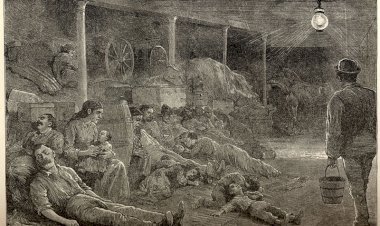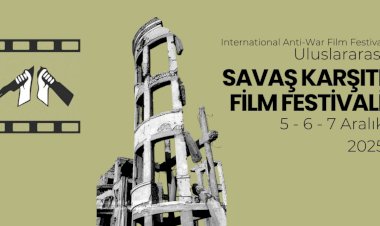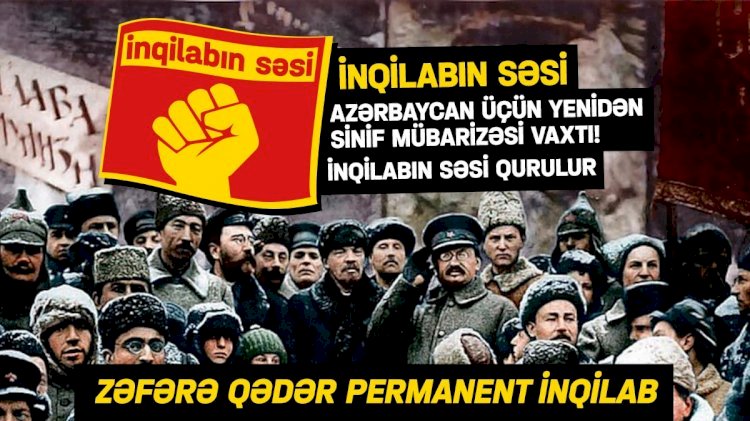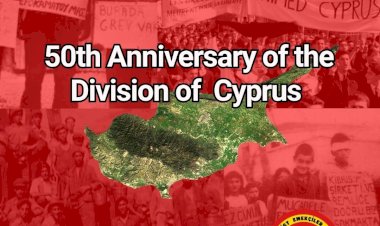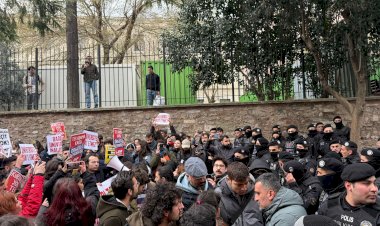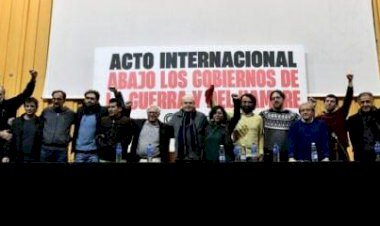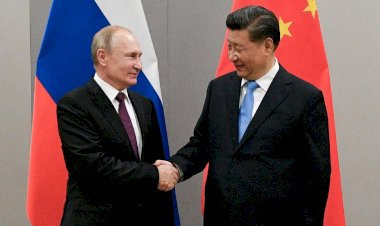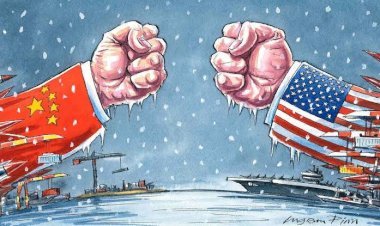Is Human Violent by Nature?
Violence exists in the world of human's semantic world and emerges from the social order. There is force, not violence, in nature.
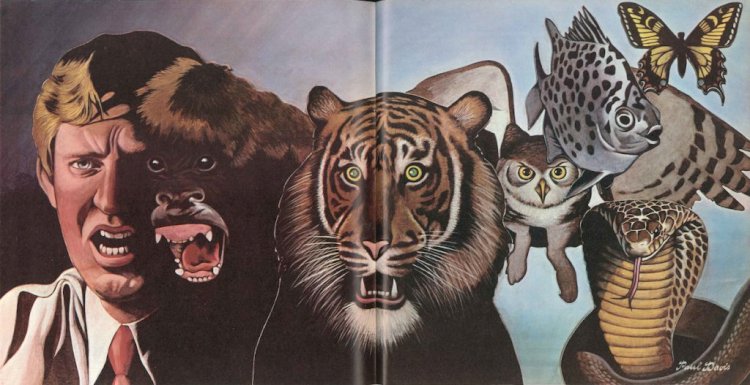
by Meriç Erdolu
It is a quite common opinion that human is violent by nature. People who attack each other or actions that we can be called physical violence such as hitting or killing are the first ones that come to mind when it comes to violence.
It is a mistake to attribute the violent acts in nature between the predator and the prey to human beings while referring the human nature. This perspective asserts that human nature is as simple as this and violence is genetically inherited.
But, defining violence only on the basis of hitting and hurting does not make any sense when defining the other types of violence like; verbal, psychological or symbolic violence. They have something in common for us to classify them as violence and not from nature.
What is violence?
The question of what is violence has a variety of answers. It is the use of physical force so as to injure, abuse, damage, or destroy as a general view, yet when we consider the facts of what makes an act, a violent action, we can see that it is something very different from brute force. This is not the act of violence that inflicts pain or physical harm to others; this is its socially constructed lingual definition.
We, humans, socially define some behaviors or deeds as violence. Therefore, these actions are accepted as violence, regardless of the physical harm or pain it causes, and perceived as insulting, humiliating, irritating, and painful by the person or people subjected. Individuals learn to practice this and how they will feel when they are subjected to violence in the society they were born in.
To illustrate, when we stumble and fall while running, we feel pain and may have serious injuries; but in that circumstance, we do not consider ourselves to be exposed to violence. Or, we do not claim that gravity is exposing violence to us because this does not opt into violence. Yet, if someone pushes us and makes us fall while running, even if we don’t feel pain or have not any physical injuries, we would claim that we are subjected to violence. Here, we can say what we call violence is the additional element in the second case when we compare to the first one.
If we take the “pain” as the determiner to measure or define violence, some painful actions that are necessary and we have to bear should also be defined as violence, but they are not. For example, during operations before the invention of anesthesia, people were not anesthetized and all (amputation) operations were done while the patient was in agony[1].
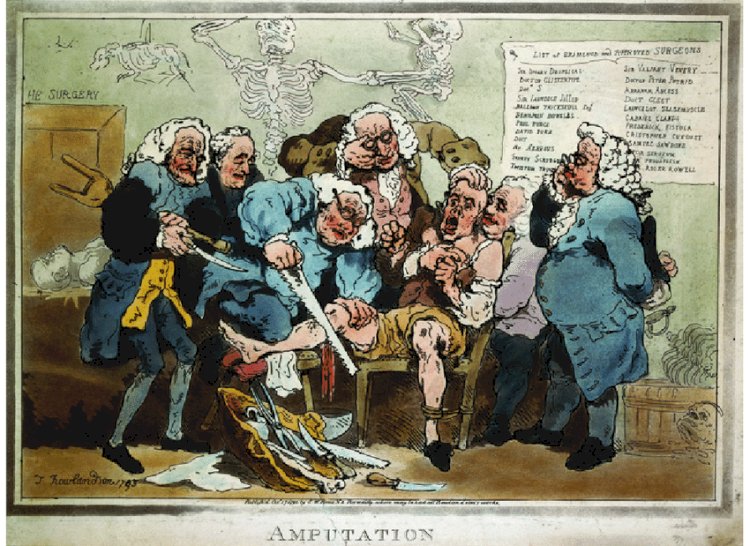
Five surgeons participate in the amputation without the anesthetic of a man’s leg while another oversees them. Amputation, Thomas Rowlandson, 1793.
As it is clear in the picture above, we see that what the surgeon does is not very different from what a torturer might do. The criterion that distinguishes this situation from torture is that the surgeon performs this operation in order to treat the patient who consents to the operation. In other words, what differentiates a surgeon from torture is the relationship between the surgeon and the patient through language.
Likewise, torture is also a kind of relationship between the torturer and the victim that both sides are aware of. What makes this action torture is a socially constructed definition of it. In the previous case, both the surgeon and the patient do not consider this deed as an act of violence; they both define it as an action performed to improve the patient’s health.
Another example can be given as martial arts. The sportspeople are not considered to have committed violence or the act of beating is not an act of violence at the same time. Here, there is an agreement between the sportspeople via the rules of the game. The sportsperson who is beaten according to the rules is considered to be only defeated, unlike the person beaten in a typical street fight, and an expression such as “beaten” is not used for that person or this is not a situation that must be embarrassed about. This person has just been defeated for that reencounter. That’s because this action is performed as a sports game and the interpretation of sports is different from violence. At that point, a question may come to the mind; if a violent act considered as violence (for example violence to women) is no longer accepted as violent, whether that action becomes nonviolence or not. The answer is the purpose of that action. If the action is practiced for a purpose of violence, then it is still violence or otherwise, if the pushing action in the first example was done not for violence but for any other purpose. then it would not be violence because, then, a relationship with a different meaning is established between those people.
Practitioners and Receivers of Violence
Another issue to consider about violence is the practitioners and receivers. Since violence is a phenomenon that arises with meaning established through language in interpersonal relations, it is something and at least two sides are needed to occur. A person cannot commit violence to her/himself. When someone physically injures her/himself or practices another form of violence, this is not expressed as “self-violence”. Moreover, these sides must be human because, only if, both the practitioner and the receiver are a person, they can have a meaning established through that language. Because of the fact that animals could not have a concept and understanding of violence from their points; if an animal is beaten up, that animal would only feel physical pain, but cannot understand what is called violence. So, there is no such thing as violence in the actions between animals. Similarly, the versions of violence such as humiliation and insult are also not the case for animals because the animals cannot understand the meaning of these behaviors or words, nor can they understand the humiliating purpose behind the act.
Only a bystander can understand that a beaten animal is subjected to violence. Of course, what is mentioned here is not justifying physical, sexual, and other different kinds of abused animals as harmless and it also does not extenuate the damage of those actions. As mentioned above, animals suffer and they even experience psychological devastation.
When we think backward, an animal cannot commit violence against a human, too. For example, when a lion attacks a human, it does not do it for the purpose of violence like people do. It must have attacked either to feed or to defend itself, so its action is only physical harm, not violence. Indeed, when a person experiences such a case, s/he does not explain that as “this animal has committed violence on me.” In other words, there is the action of using force, not violence, in nature.
An Example of “Violence” in the Nature: the Rapper Sea Otters
An article published in Evrim Ağacı and titled “Cute and Rapper Sea Otters”[2], which narrates the sea otters’ raping the young seals can be given as an example of the wrong perspective on violence. It is mentioned that some otters rape them until they die. However, rape is an action that can only have meaning in human society. The concept of rape which is a kind of “forced action” has a meaning to the living being who is aware of that action.
As an animal does not have these cultural or linguistic codes, it cannot perceive and interpret that as rape, and can only experience the physical pain and psychological destruction, which might also differ from one species to the other. Likewise, the other animal performing the action does not attribute the same meaning as a human does, but as an instinctive movement. However, in both cases, we cannot call this event rape by evaluating the situation through our world just because it has similarities with humans’ actions in appearance.
Rape, a form of sexual violence, is not just an attempt of one living being to penetrate its sexual organ with another one forcefully. Behind that lies a huge world of meanings attributed to this action, such as the rapist trying to have power over the victim and making him/her accept that.
We see the same mistake in the evaluation of the motivation of the act in the news about the otters:
“Marine biologists have an explanation for this matter. In observations, it is seen that the sex of otters is quite harsh and there are very though scuffles among males. And many of these otters are rejected by females because they are not strong enough. Especially in those rejected otters are observed practicing rape behavior to the seals. Therefore, the researchers believe that the otters may be directing the anger of rejection and psychological pressure posed as a result of inability in breed to an easier target than a female otter, to the young seals.”
Here, the explanation is based primarily on the same idea that rape performed by a human is a result of rejection, disfavor, or some kind of sexual dissatisfaction. However, these are not the reasons for rape, but the meanings attributed to the relationship with the victim. For example, research about child abuse revealed that some of the abusers were exposed to sexual or physical abuse in their childhood and they abused children due to the emotions originating from these bad memories in their subconscious, with feelings such as protecting other children and helping them in their development although they know that the thing they do is completely wrong[3].[4]
Here, this explanation is made by accepting animals have the same semantic world as humans. However, these values and concepts are human-made. Because human beings socially construct this language and the meaning within the social structure they come together with their vital needs, as a result of their mutual interaction with others. While newborns are growing up, they learn this language and are shaped accordingly. Thus, in order for these same concepts to be found in other animals, they must at least have a social structure like ours. Therefore, there is no concept of violence in other animals. In the news above, an approach that approaches violence not from this point of view, but from a point of directly matching the cases in nature with the ones in the human world causes both the interpretation of the current situation as rape and the mistake of making explanation with the reasons mentioned makes the real reasons behind the rape unexplained.
The Origin of Torture
What makes violent acts torture? Since the aim is to make a person suffer physically and psychologically for a long time, its non-instantaneous, and continuing for a certain time can be counted as the characteristics of torture.
For example, inserting a pipe from someone’s mouth into his/her stomach and giving liquid food by force to a person who is on hunger strike/ death fast is torture itself besides the physical pain it gives. Because forced feeding is an act of violating the will. In other words, making someone eat even honey by using force is torture, too. To illustrate, in sadistic-masochistic relations, pleasure is ensured through violence and torture with mutual consent. So, violence can sometimes be desired. In short, the act of violence should be evaluated around the concept of consent and within the social content.
A Different Form of Violence: Symbolic Violence
Violence is not only applied physically or psychologically in terms of its implementation, there is also a different type of violence called as “symbolic violence”. As the concept of Pierre Bourdieu, “the symbolic violence” states that you do not even face people to commit violence, let alone touch them. For example, in patriarchal societies, with the power of man from a historical background, by accepting the power to act all kinds of actions in life, Bourdieu defined the man’s being subduer and in a superior position when compared to women as symbolic violence against women in that society. As another example, Bourdieu states that the standard body perception imposed by fashion in modern societies is symbolic violence against people who do not suit these standards. He also mentions that symbolic violence is difficult to notice as it is internalized as natural or normal by those exposed to it. Here, again, the main criterion that makes these acts violent is the relationship between the sides.
To conclude, violence is neither a direct physical attack nor implementing physical pain; it is a phenomenon that takes place in the interpersonal relational purview based on the meanings attributed to these behaviors. When we take into consideration various types of violence such as mobbing, psychological violence, torture and symbolic violence, the common point that makes all these violence is a phenomenon interpreted through the language, based on the relation established between the one who practice it and the one who is subjected to it. In other words, though action has the characteristics of violent action, its difference from the actions that are not accepted as violence is its meaning in the background.
On the basis of these results, “violence” created by humans is not a natural phenomenon, nor does it comes from human nature, in a word, we do not have “a violent nature” because of our genes or a neural network of anywhere in our brain.
Although there is research on certain parts of the genes[5] which play role in a violent acts, it does not mean that violence comes directly from that biological feature or a combination of biology and the environment. As Richard Lewontin stated in his book, “The Triple Helix[6]”, biological factors such as genes in such traits (or phenotypes) are only a parameter, not a constitutive reason; the constituent reason/cause is the reason that can ensure that feature never appears in case of any difference. And the reason for “violence” is the “social environment”. Because, in the event of social environment change, if an individual does not have the feature of violence despite having the genes, then it is the social environment is the main determinant. If social conditions are appropriate, the feature of using violence will occur in individuals regardless of genetic structure.
Human being invents and uses violence socially and the invention of violence is strictly related to the structure of human society. Minor example; are violence against women, child abuse, animal abuse, violence to the protesters, violence in schools, at home, in traffic, at the workplace, etc. these various kinds of violence we experience is not independent of the current social problems. Plus, this situation can be eliminated by both voluntary interventions and struggling with the other reasons behind it to emerge. That is to say, we do not have to live with violence in any field of our lives.
[1] Boyd, J., E., (2011), “Painless Dreams”, https://www.sciencehistory.org/distillations/painless-dreams
[2] . Bakırcı, Ç.M.”Sevimli Ve Tecavüzcü Su Samurları” Evrim Ağacı. https://evrimagaci.org/sevimli-ve-tecavuzcu-su-samurlari-1600 (erişim tarihi: 15 Mart 2020).
[3] Aslıhan Okan İbiloğlu, Abdullah Atlı, Remzi Oto, Mustafa Özkan, (2018), “Çocukluk Çağı Cinsel İstismar ve Ensest Olgularına Çok Yönlü Bakış”, Psikiyatride Güncel Yaklaşımlar, http://dergipark.gov.tr/download/article-file/338602
[4] İMDAT Şiddeti Önleme Ve Rehabilitasyon Derneği & ASUMA Acıbadem Üniversitesi Suç ve Şiddetle Mücadele Uygulama ve Araştırma Merkezi, (2016), “Çocuk İstismarına Yöenlik Rapor”, http://imdat.org/wp-content/uploads/ 2016/05/ÇOCUK-İSTİSMARINA-YÖNELİK-RAPOR.pdf
[5] Jari Tiihonen ve ark., (2015), “Genetic background of extreme violent behavior”, Molecular Psychiatry, https:// www.nature.com/articles/mp2014130
[6] Richard Lewontin, (2006), “Üçlü Sarmal”, TÜBİTAK Yayınları 6




